This article delineates ten pivotal trends that are transforming the food and beverage landscape within the hospitality industry. It emphasizes the importance of:
Each trend is substantiated by relevant statistics, industry insights, and examples of successful implementations. Collectively, these elements enhance customer satisfaction, operational efficiency, and profitability in an increasingly competitive market.
The hospitality industry's food and beverage landscape is undergoing a remarkable transformation, driven by evolving consumer preferences and technological advancements. As establishments strive to enhance profitability and customer satisfaction, they are increasingly turning to data-driven insights, sustainable sourcing, and innovative menu offerings. However, amidst these promising trends, a pressing question emerges: How can businesses effectively adapt to these changes while ensuring they meet the diverse needs of today's discerning diners? This article explores ten pivotal trends reshaping the food and beverage sector, providing valuable insights for industry leaders looking to thrive in a competitive marketplace.
Lights On harnesses the power of advanced analytics to deliver critical insights into food and beverage management, significantly impacting profitability within the service industry. By meticulously analyzing customer preferences, sales trends, and market dynamics, the company empowers service industry businesses to make informed decisions that drive financial success. This data-driven methodology not only refines menu offerings but also optimizes pricing strategies, enabling establishments to maximize revenue potential while effectively catering to customer demands.
The hospitality industry food and beverage sector has experienced remarkable growth in revenue, with an impressive 50.2% increase from 2021 to 2022, outpacing the overall hotel revenue growth of 24% during the same period. Such statistics underscore the necessity for hotels and restaurants to leverage analytics for enhanced profitability. For instance, the incorporation of metrics such as Revenue Per Available Customer (RevPAG) allows establishments to craft tailored interactions that resonate with patrons, fostering loyalty and encouraging return visits.
Successful examples abound, including the collaboration between Lights On and Hotel Wailea, where data-driven strategies resulted in exceeding revenue expectations post-renovation. This case exemplifies how analytics can transform operational efficiency and enhance brand visibility in a competitive market.
Industry leaders highlight the importance of analytics in driving profitability. As specialists observe, the ability to utilize data insights is essential for transforming visitor experiences and ensuring excellent financial performance. In a landscape where 65% of consumers prioritize personalization, the role of advanced analytics becomes increasingly vital in shaping successful strategies in the hospitality industry food and beverage that resonate with guests and bolster overall profitability.
To further enhance bookings and revenue, hotel owners should consider implementing based on data insights. For example, leveraging customer data to tailor promotions and offers can significantly boost engagement and conversion rates. Additionally, regularly reviewing and adjusting menu items based on sales performance can help optimize profitability. Continuous adaptation and strategic planning are essential in this evolving market.

Sustainable sourcing is revolutionizing the food and beverage landscape within the hospitality industry food and beverage sector. By emphasizing local and organic ingredients, establishments in the hospitality industry food and beverage not only bolster local economies but also resonate with environmentally conscious consumers. This enhances brand image and fosters customer loyalty, as guests increasingly prefer businesses that reflect their values.
Furthermore, implementing sustainable sourcing strategies in the hospitality industry food and beverage can significantly reduce carbon footprints, with the hotel sector accounting for around 1% of global carbon emissions, and streamline operational efficiency. Chefs advocate for this approach, noting that locally sourced ingredients often yield superior flavor and freshness, further elevating the dining experience.
As Oliver Truesdale-Jutras, Chairman of Singapore's F&B Sustainability Council, states, "Chefs should craft menus only they could envision — specific to their time and place," emphasizing the importance of championing local farms.
As the hospitality industry food and beverage sector continues to evolve, incorporating sustainable practices is becoming crucial for preserving competitive advantage and meeting the expectations of today's discerning travelers. Additionally, sourcing food locally helps keep money within the community and supports local businesses, leading to a more positive net farm income for farmers. The multiplier effect takes place when hotels and eateries purchase from local farmers, leading to heightened consumer spending that benefits other local businesses and organizations.
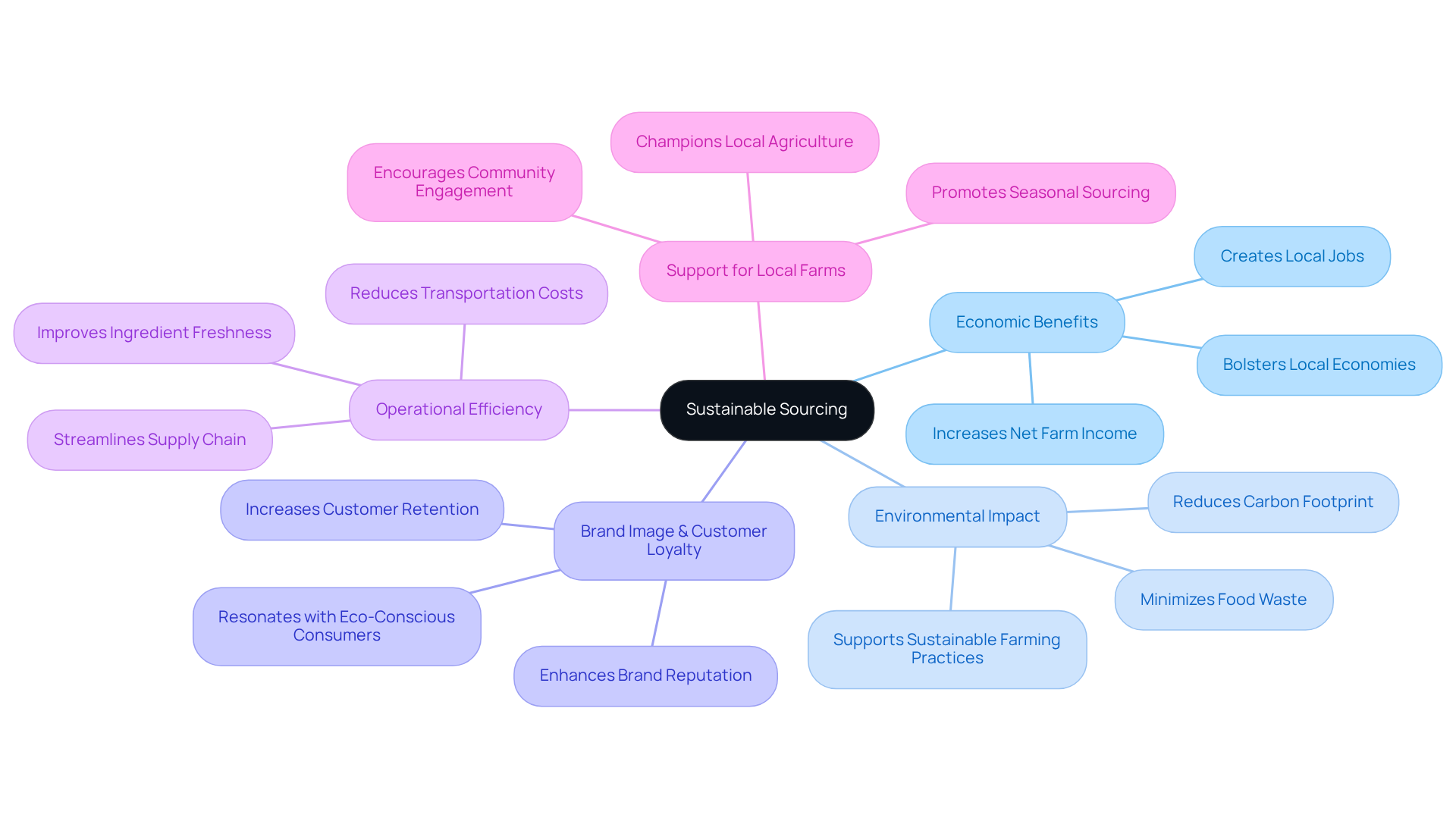
As health-conscious consumers increasingly prioritize plant-based options, the hospitality industry food and beverage is evolving its menus to feature more vegetarian and vegan dishes. This shift in the hospitality industry food and beverage not only addresses dietary preferences but also responds to the heightened awareness of health and linked to meat consumption. By integrating plant-based options, establishments within the hospitality industry food and beverage can broaden their appeal and enhance marketability. For instance, research indicates that vegan and lacto-ovo vegetarian diets are associated with a nearly 50% reduction in the risk of type 2 diabetes compared to nonvegetarian diets, underscoring the health benefits of these offerings.
To effectively market these dishes, restaurants can highlight their nutritional advantages and visually appealing presentations. Engaging storytelling around the sourcing of ingredients and the sustainability of plant-based options can further resonate with consumers. Furthermore, successful instances from the industry demonstrate that making plant-based dishes the standard option at events can significantly boost their adoption, improving attendee satisfaction and loyalty. As the demand for plant-based foods keeps increasing, with forecasts suggesting a doubling of plant-based meat market share in the next four years, businesses in the hospitality industry food and beverage that adopt this trend are likely to succeed in a competitive environment.
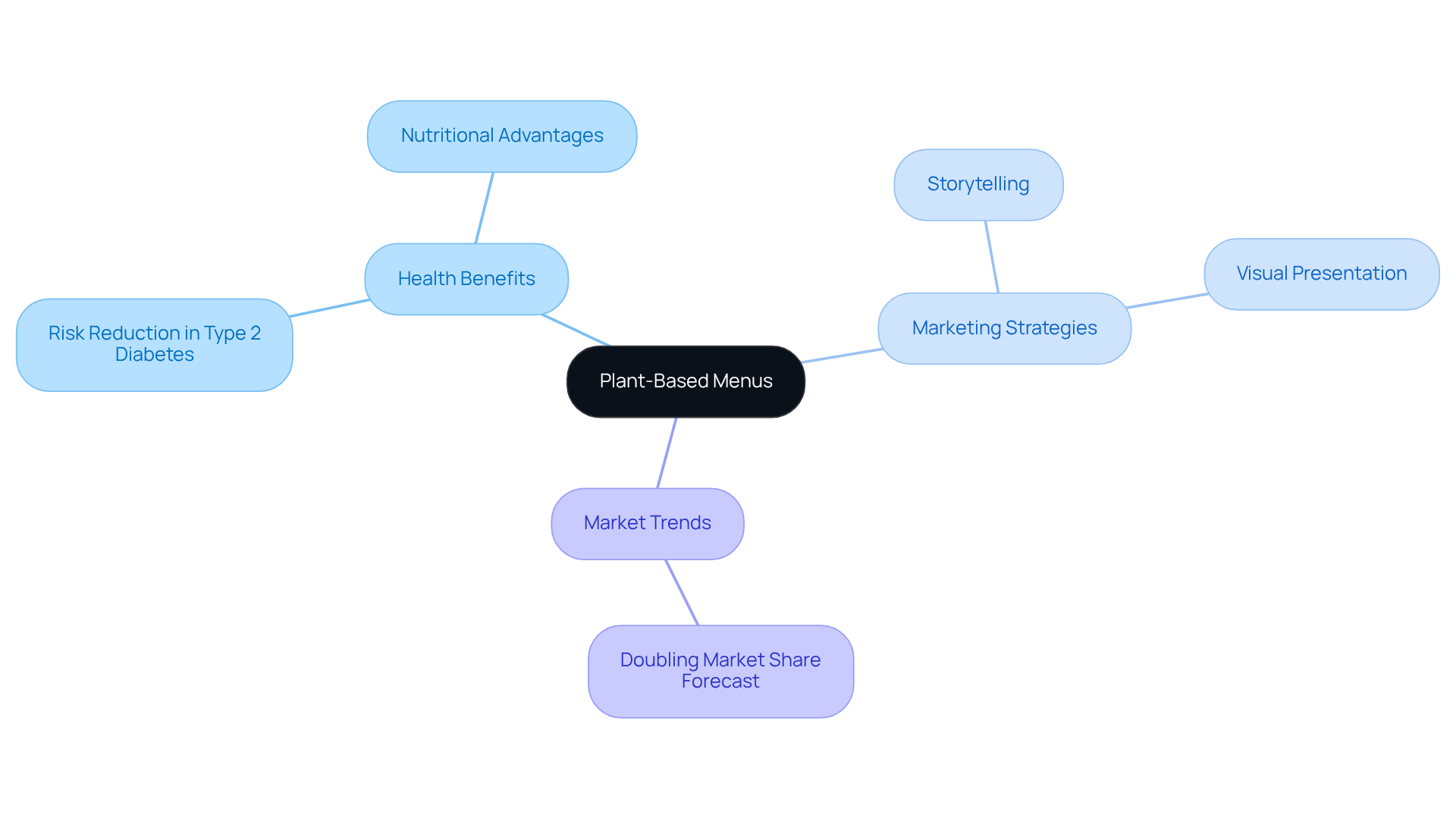
The incorporation of technology in the hospitality industry food and beverage is fundamentally transforming how visitors interact. Mobile ordering systems and contactless payments lead this transformation, significantly enhancing convenience and customer satisfaction. By implementing these digital solutions, hotels and restaurants can streamline operations, minimize wait times, and provide personalized experiences that resonate with visitors. Notably, a trend indicates that 64% of travelers prefer mobile check-in options, underscoring a robust demand for contactless interactions. Furthermore, the surge in direct digital reservations, which expanded by 20.2% from 2019 to 2024, highlights the importance of user-friendly technology in meeting visitor expectations.
To effectively leverage these technological advancements, hotel owners should consider that emphasize their digital offerings. For instance, promoting mobile check-in options through social media campaigns can attract tech-savvy travelers. In addition, utilizing visitor data collected from these technologies can inform personalized marketing efforts, enhancing engagement and fostering loyalty.
Industry leaders assert that harnessing data from these technologies not only informs future marketing strategies but also drives operational enhancements. As hotels and restaurants in the hospitality industry food and beverage adapt to these innovations, they position themselves competitively within a rapidly evolving landscape. The advantages of mobile ordering and contactless payments extend beyond guest satisfaction; they also improve operational efficiency, allowing staff to concentrate on more meaningful interactions with guests. This comprehensive approach to technology integration is critical for thriving in the contemporary service industry.
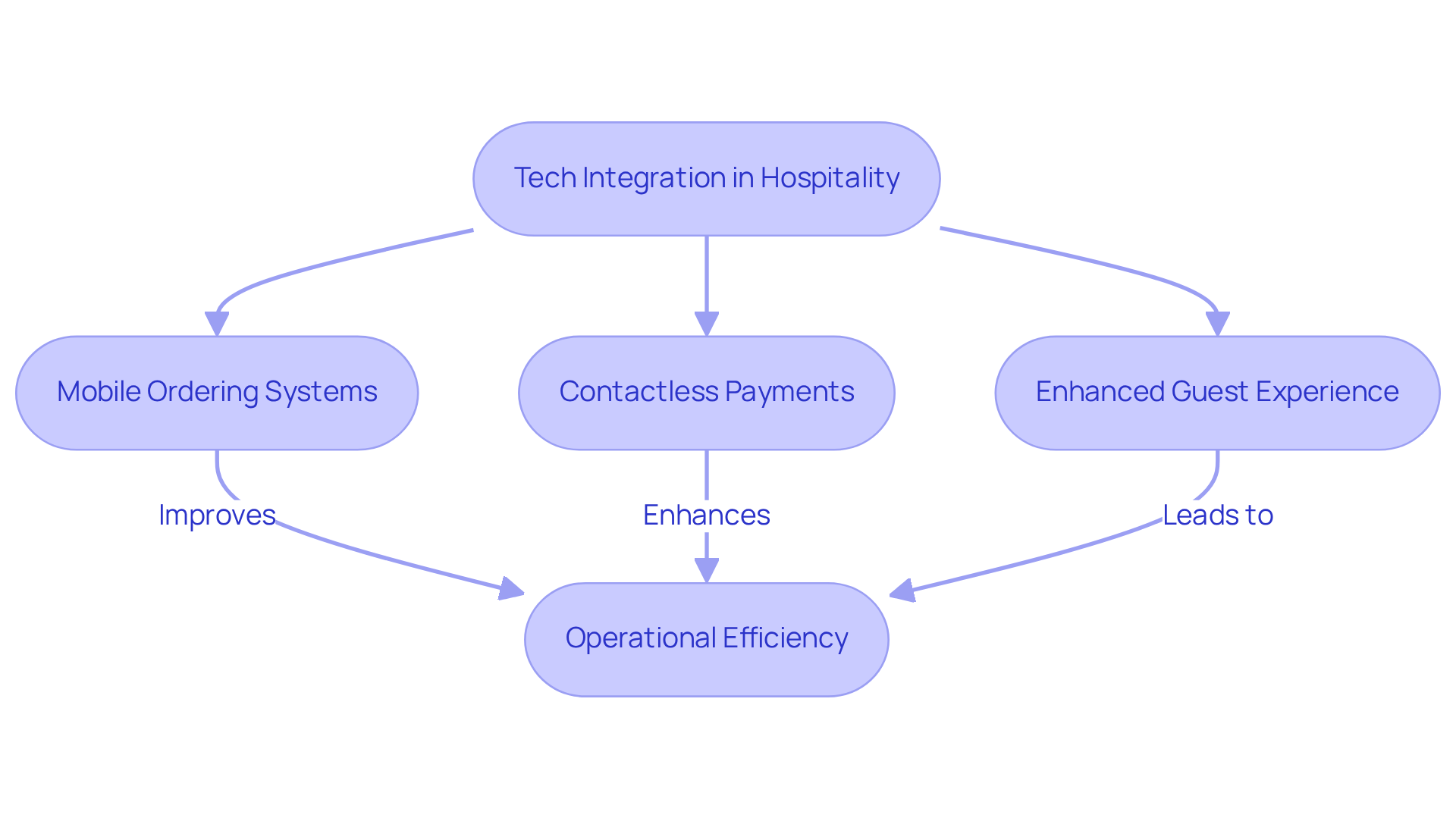
Experiential dining is emerging as a pivotal differentiator in the hospitality sector. By providing distinctive and engaging activities, eateries and hotels can enthrall visitors seeking more than merely a meal. This trend encompasses:
These experiences engage patrons on multiple sensory levels. Significantly, 89% of diners regard the , including ambiance and service, as essential when selecting a full-service restaurant. Establishments that prioritize memorable moments not only enhance customer satisfaction but also cultivate deeper connections, resulting in increased repeat visits and positive word-of-mouth marketing.
Furthermore, with 72% of diners indicating a desire for additional experiential alternatives, the emphasis on crafting memorable dining moments is crucial for building loyalty and enhancing financial results. For hotel proprietors, implementing strategies like immersive dining experiences that involve all senses can greatly improve visitor satisfaction and loyalty, establishing their establishments as leaders in the evolving service industry.
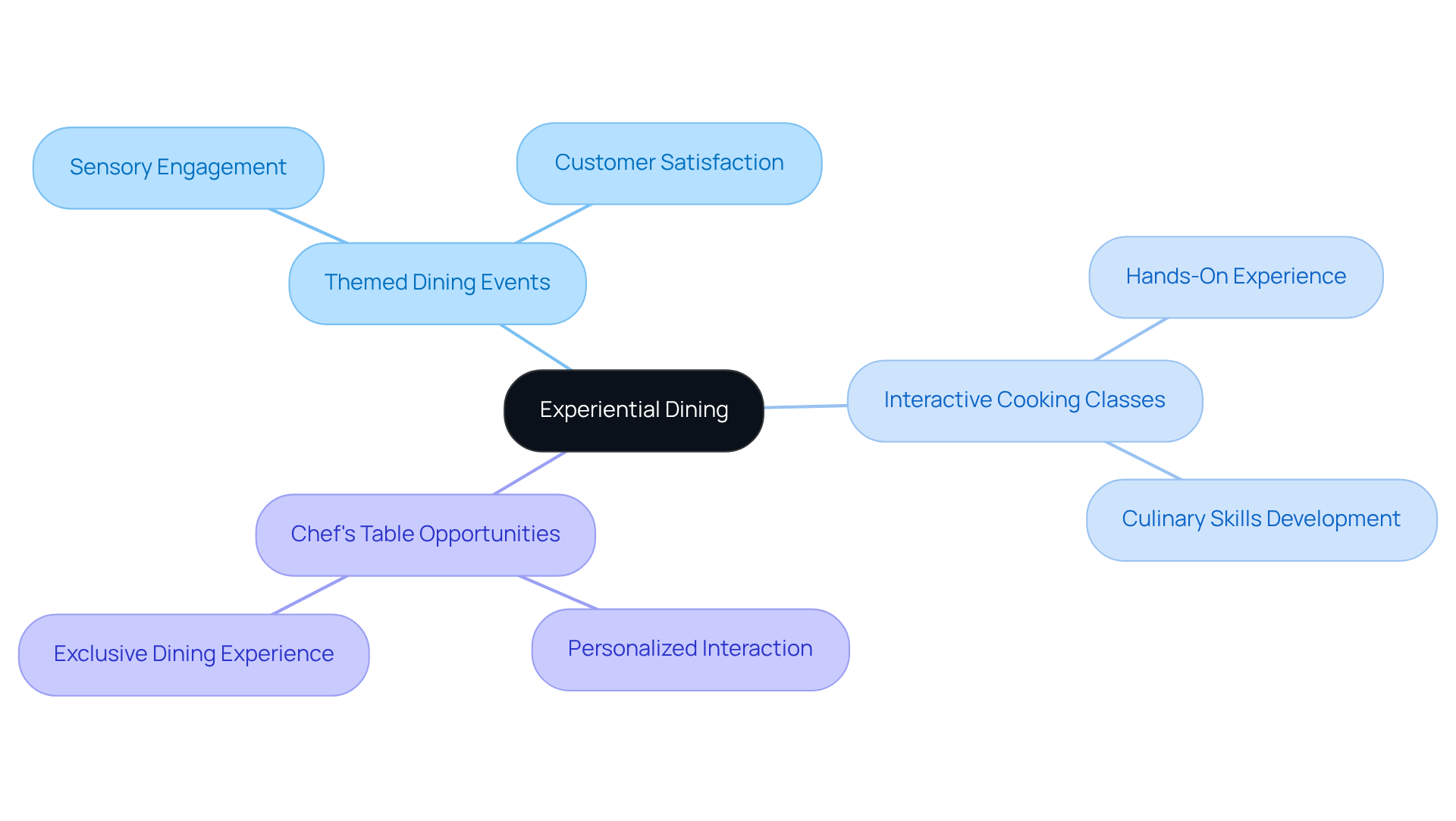
To stay ahead in the competitive hospitality industry food and beverage landscape, businesses must prioritize and adapt to the evolving tastes of consumers. This necessitates the integration of global flavors, seasonal ingredients, and popular dietary preferences. By consistently refreshing menu selections, establishments in the hospitality industry food and beverage can enhance their brand's allure and excitement, compelling patrons to return for new culinary experiences.
Furthermore, actively seeking customer feedback serves as a valuable tool in guiding menu development within the hospitality industry food and beverage, ensuring that offerings resonate with guest preferences and align with market trends.
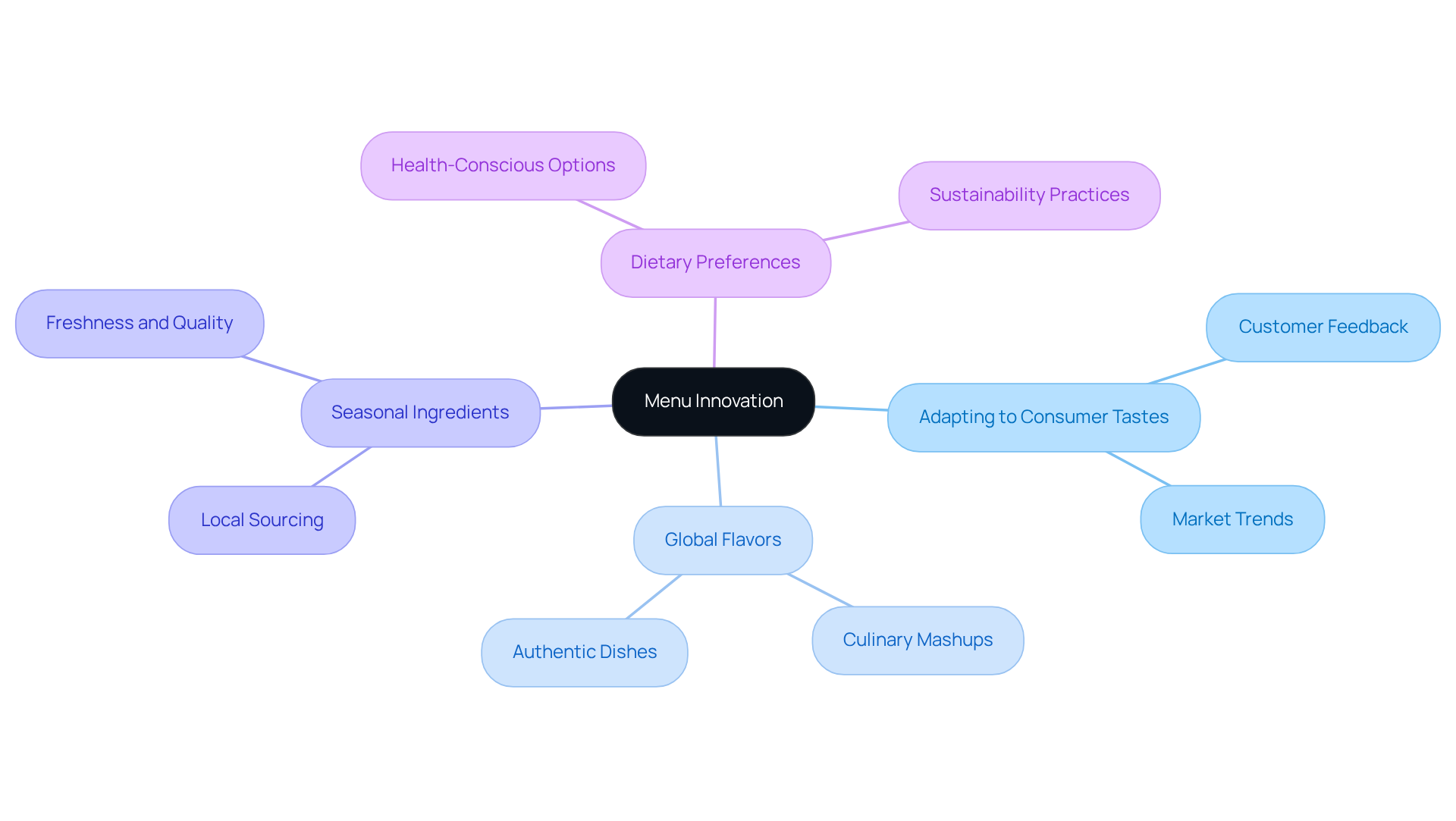
Incorporating health and wellness into menus is increasingly essential for businesses in the hospitality industry food and beverage that aim to attract health-conscious consumers. By offering nutritious options such as low-calorie dishes, gluten-free alternatives, and superfood ingredients, the hospitality industry food and beverage can meet the rising demand for healthier dining experiences. Recent data indicates that 87% of consumers consider their health and well-being when making food purchases, and 77% of Americans express a desire to eat healthier, underscoring the significance of this trend.
Successful instances of eateries in the hospitality industry food and beverage that cater to this demographic include those that offer , allowing diners to choose smaller portion sizes or healthier ingredients. This flexibility not only enhances customer satisfaction but also encourages patrons to make better dietary choices. The case study titled 'Flexibility in Menu Options' demonstrates how dining establishments can effectively implement these strategies.
Furthermore, effectively marketing these nutritious offerings in the hospitality industry food and beverage is crucial; establishments can leverage transparency in nutritional information to empower guests, fostering informed dining decisions. Quotes from nutrition experts reinforce this approach. For instance, Hippocrates famously stated, "Let food be thy medicine and medicine be thy food," emphasizing the vital role of nutrition in health. Additionally, Dr. Mark Hyman noted, "What most people don’t realize is that food is not just calories; it’s information," highlighting the importance of understanding food choices.
As consumer preferences change, establishments within the hospitality industry food and beverage that adjust their menus to offer varied, health-oriented choices, including the rising trend of functional foods, can foster brand loyalty and boost sales, ultimately succeeding in a competitive environment.
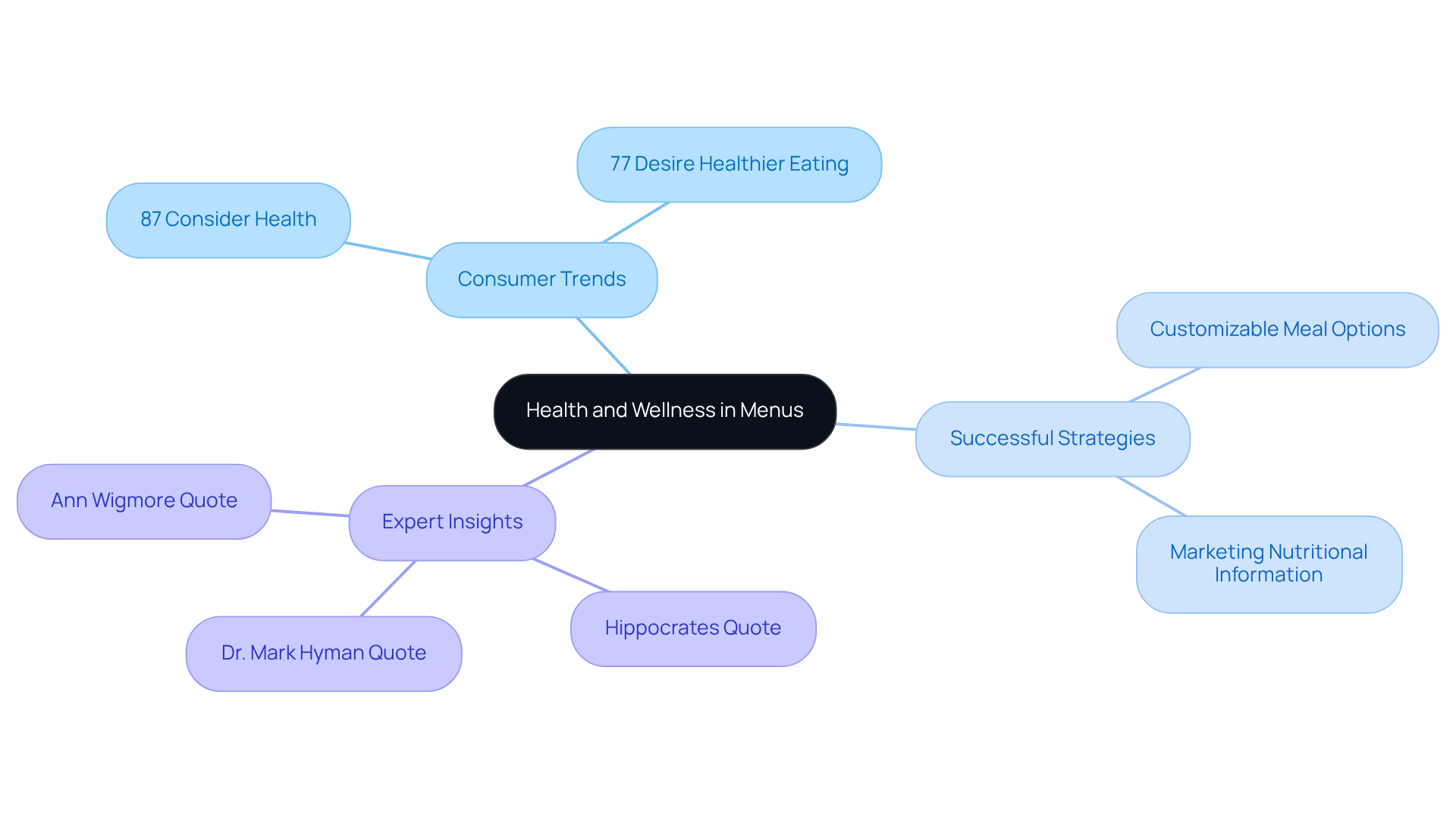
Ghost kitchens, also known as delivery-only establishments, are revolutionizing the hospitality industry food and beverage landscape by allowing businesses to operate without a traditional dining area. This innovative model significantly reduces overhead costs, empowering establishments to focus on delivery services that meet the rising consumer demand for convenience. By leveraging technology and data analytics, service industry businesses can streamline their delivery operations and broaden their reach to a larger audience.
Numerous successful examples highlight this trend, with traditional restaurants adapting by launching ghost kitchen concepts that utilize their existing culinary expertise while minimizing physical space requirements. Industry leaders emphasize that the future of the sector hinges on client satisfaction and flexibility. For instance, Steve Wynn asserts that customer experience is vital for the longevity of service enterprises, while Ian Schrager underscores the importance of creating a welcoming atmosphere, even in a delivery context. Moreover, Anthony Melchiorri cautions that neglecting online reviews can lead to business failure, reinforcing the necessity for ghost kitchens to prioritize customer feedback.
The emergence of ghost kitchens is reshaping operational strategies within the hospitality industry food and beverage sector. With approximately 7,606 currently active in the U.S., this model is gaining momentum due to its efficiency and adaptability. As consumer habits increasingly shift towards online meal ordering, conventional dining establishments are recognizing the imperative to invest in branding and marketing to thrive in this competitive landscape. The global ghost kitchen market, valued at around $58.61 billion in 2022, is projected to expand to about $177.85 billion by 2032, reflecting the industry's response to evolving dining preferences.
In conclusion, the rise of delivery-only concepts signifies a profound transformation in the hospitality industry food and beverage, representing more than a fleeting trend; it changes how food is prepared, distributed, and consumed, compelling traditional dining establishments to innovate and adapt to remain relevant.
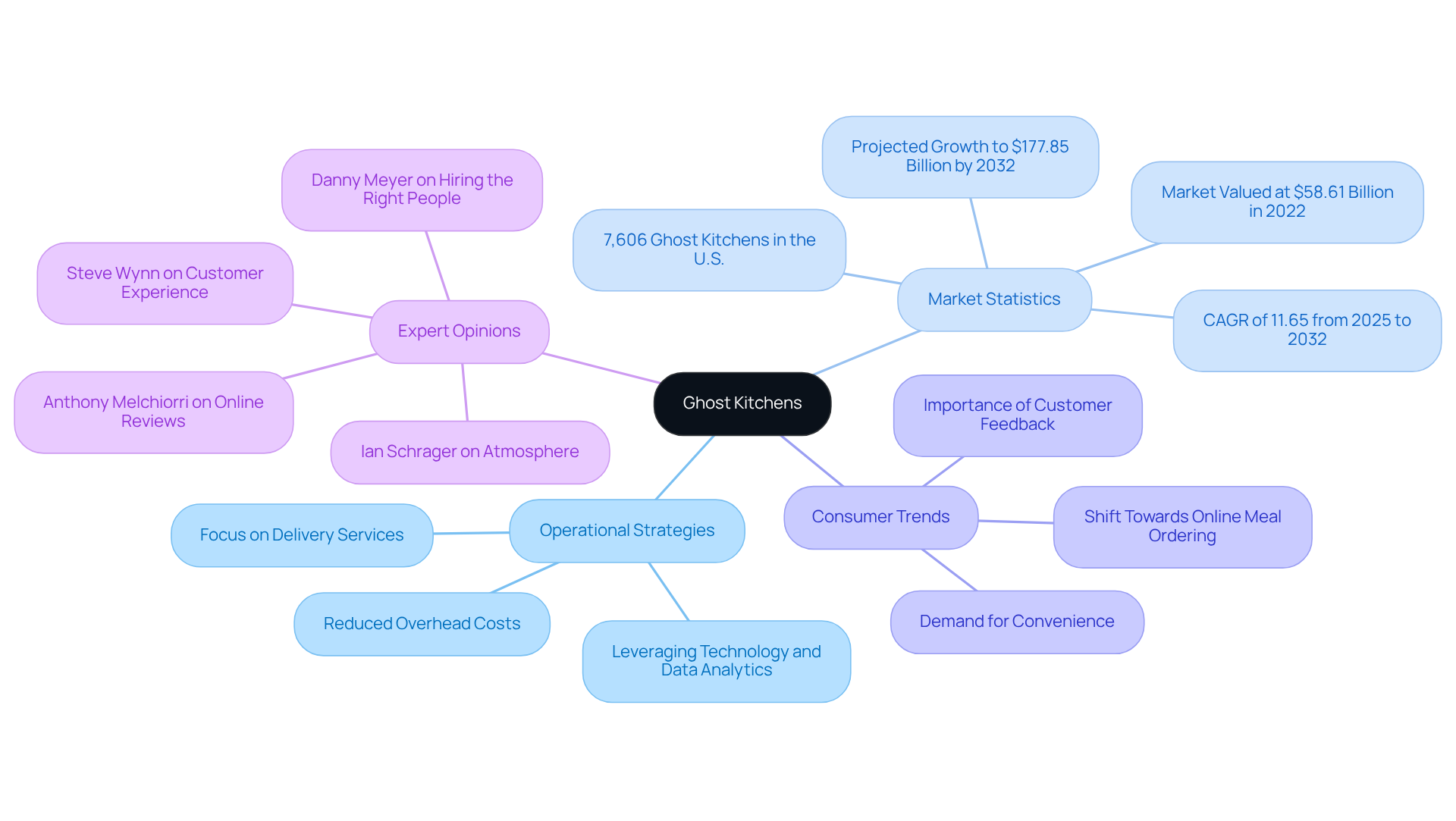
Beverage trends are evolving, with consumers increasingly seeking craft and locally sourced options. This shift presents a challenge for the hospitality industry food and beverage businesses that must adapt to meet the expectations of discerning customers. By curating a beverage menu featuring artisanal cocktails, local wines, and craft beers, these establishments in the hospitality industry food and beverage can not only elevate the dining experience but also attract a clientele that values authenticity and community support. This trend enhances the overall meal while simultaneously fostering relationships with local producers.
To effectively market these unique offerings, restaurant owners in the hospitality industry food and beverage can leverage targeted marketing strategies from Lights On, which include proven methods for understanding and reaching their preferred audience. Maximize your reach through , unify your brand voice across digital assets, and enhance advertising quality to differentiate your establishment in a competitive market. Furthermore, employing tactics to boost customer loyalty, such as remarketing to previous visitors, can further solidify your status as a favored dining destination.
As you consider these strategies, ask yourself: how can your selections in the hospitality industry food and beverage reflect the growing demand for craft and local products? By embracing these trends, you position your establishment not just as a place to dine, but as a vibrant part of the community, driving both customer satisfaction and business success.
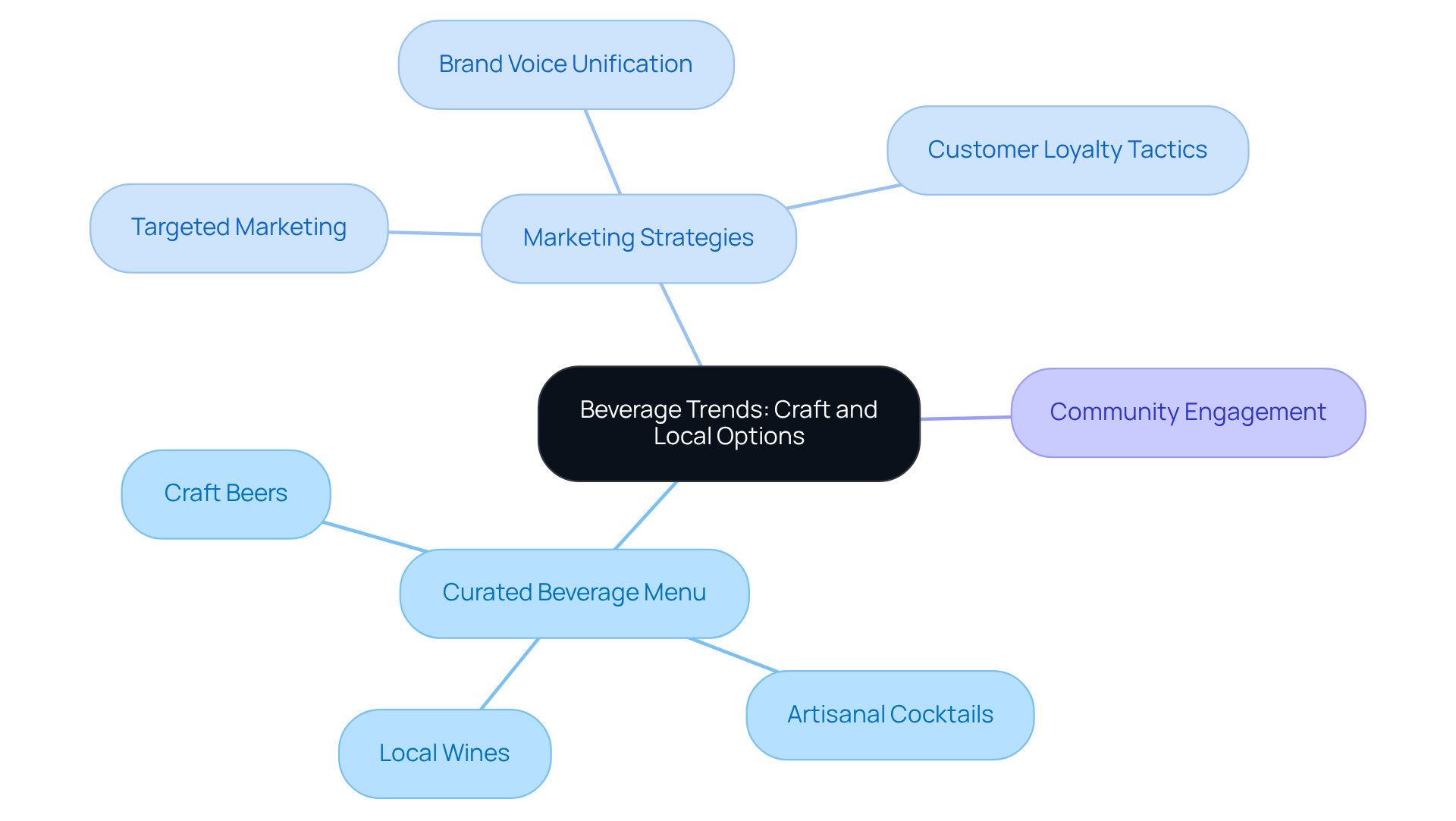
In the competitive landscape of the hospitality industry food and beverage, delivering exceptional service is not just beneficial—it's essential for success. Investing in comprehensive staff training programs equips employees with the necessary skills and knowledge to excel in their roles. Training initiatives should encompass various aspects, including:
By cultivating a culture of excellence, establishments can significantly enhance guest satisfaction and foster customer loyalty.
Well-prepared personnel not only enhance service quality but also effectively convey the brand's values, enriching the overall dining atmosphere. Research indicates that organizations prioritizing employee training experience better financial outcomes, with companies that invest in training seeing a 24% higher profit margin. Furthermore, 94% of employees are more likely to remain with a company that invests in their career development, underscoring the importance of training in retaining top talent. Additionally, companies are 17% more productive when employees receive the training they need.
Successful instances are plentiful in the industry, where has resulted in enhanced customer satisfaction. For instance, restaurants that implement structured onboarding processes can enhance new hire retention by 82%, ensuring that staff are well-prepared to meet customer expectations from day one. Moreover, companies that provide extensive training have 218% higher income per employee than those without it. By focusing on continuous learning and development, businesses in the hospitality industry food and beverage can create a workforce that is not only skilled but also motivated to deliver outstanding service, ultimately leading to a more satisfying experience for guests.
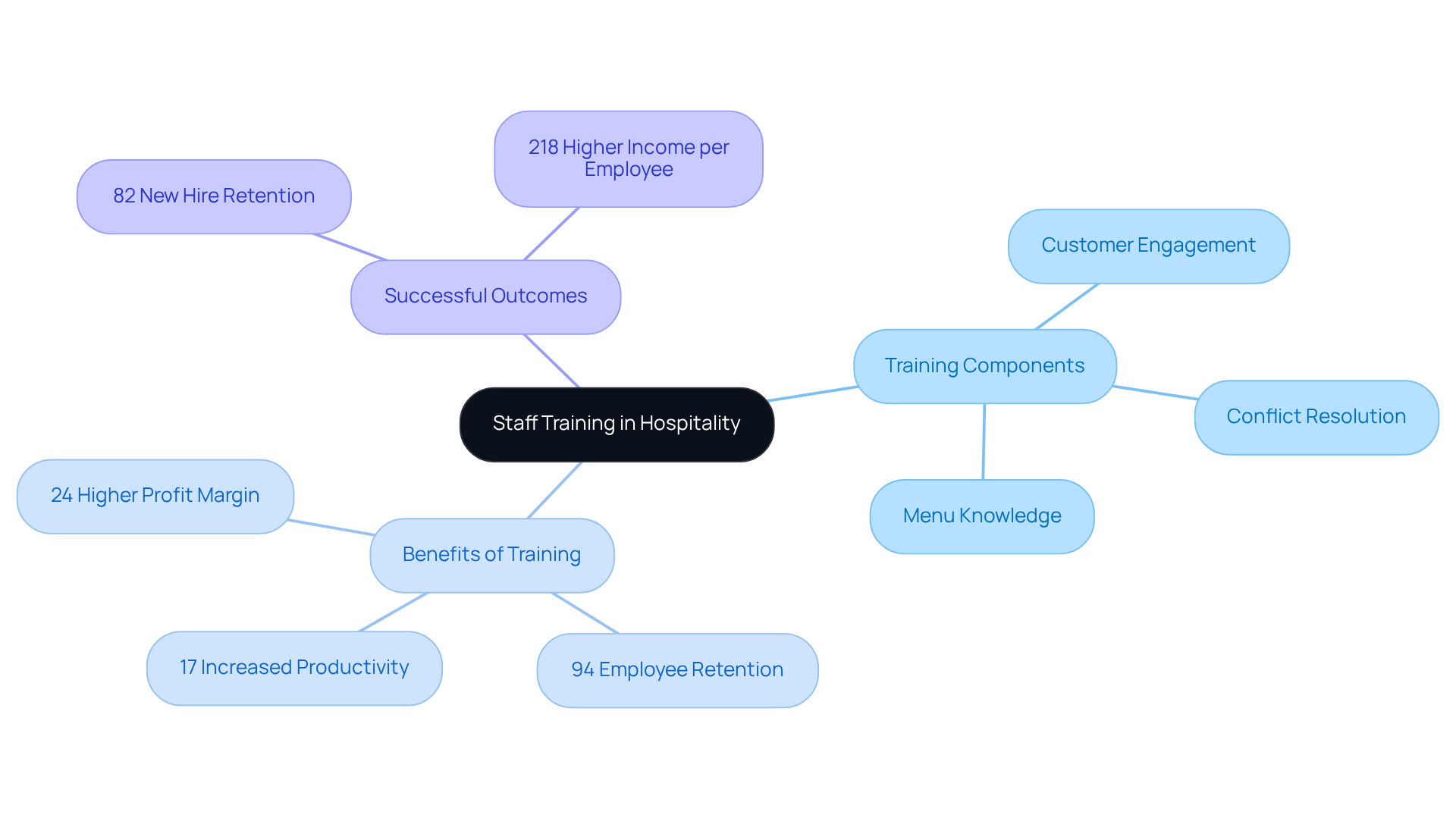
The hospitality industry's food and beverage landscape is undergoing a significant transformation, driven by diverse trends that prioritize data-driven insights, sustainability, health-conscious choices, and innovative dining experiences. By embracing these trends, establishments can enhance operational efficiency, foster customer loyalty, and ultimately boost profitability. The integration of advanced analytics empowers businesses to tailor their offerings to meet evolving consumer preferences while optimizing pricing strategies for maximum revenue potential.
Key insights from the article highlight the importance of:
All of which cater to the modern consumer's values and expectations. The rise of ghost kitchens exemplifies how traditional dining concepts are adapting to the increasing demand for convenience, while experiential dining creates memorable moments that deepen guest connections. Furthermore, prioritizing staff training ensures that service quality remains exceptional, which is crucial in a competitive market.
As the hospitality industry continues to evolve, it is vital for businesses to remain agile and responsive to these trends. Establishments that actively incorporate data analytics, sustainability practices, and innovative dining experiences will not only meet the demands of today's consumers but also position themselves for long-term success. Embracing these shifts is not just an option; it is essential for thriving in an increasingly dynamic landscape.
What is the purpose of Lights On in the food and beverage management sector?
Lights On utilizes advanced analytics to provide critical insights that enhance food and beverage management, impacting profitability in the service industry by analyzing customer preferences, sales trends, and market dynamics.
How has the hospitality industry's food and beverage revenue changed recently?
From 2021 to 2022, the hospitality industry's food and beverage sector saw a revenue increase of 50.2%, which is significantly higher than the overall hotel revenue growth of 24% during the same period.
What metrics can help improve profitability in the hospitality industry?
Metrics such as Revenue Per Available Customer (RevPAG) can help establishments create tailored interactions with patrons, fostering loyalty and encouraging return visits.
Can you provide an example of successful data-driven strategies in the hospitality industry?
A successful example includes the collaboration between Lights On and Hotel Wailea, where data-driven strategies led to exceeding revenue expectations following renovations.
Why is analytics important for the hospitality industry?
Analytics is crucial for transforming visitor experiences and ensuring strong financial performance, especially as 65% of consumers prioritize personalization in their interactions with businesses.
What strategies can hotel owners implement to enhance bookings and revenue?
Hotel owners should consider targeted marketing strategies based on data insights, such as customizing promotions and offers, and regularly reviewing menu items based on sales performance to optimize profitability.
What is sustainable sourcing in the hospitality industry?
Sustainable sourcing focuses on using local and organic ingredients, which supports local economies, reduces carbon footprints, and enhances brand image, appealing to environmentally conscious consumers.
How does sustainable sourcing benefit local communities?
Sourcing food locally helps keep money within the community and supports local businesses, leading to a positive net farm income for farmers and increased consumer spending that benefits other local organizations.
What trend is emerging in response to health-conscious consumers in the hospitality industry?
There is a growing trend towards incorporating more plant-based options in menus to meet the dietary preferences and health concerns of consumers.
How can restaurants effectively market plant-based dishes?
Restaurants can highlight the nutritional advantages, present visually appealing dishes, and engage in storytelling about ingredient sourcing and sustainability to resonate with consumers.
What is the forecast for the plant-based meat market?
The plant-based meat market is expected to double its market share in the next four years, indicating a rising demand for plant-based foods in the hospitality industry.
Transform your group booking strategies with Lights On and watch your occupancy soar.